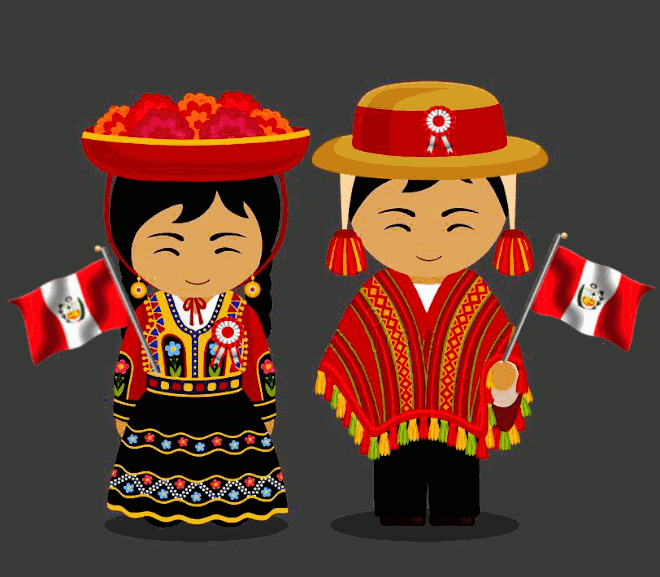PERU – SOUTH AMERICA
Peru is situated in the western part of South America. On the north it is bordered by Ecuador and Colombia, on the east by Brazil and Bolivia, and on the south by Chile. The entire west side of Peru is bordered by the Pacific Ocean. Peru’s size is 1,285,215 sq. km (496,095 sq. miles). To compare: that is roughly France, Italy and Sweden together. Or the US-states of Texas, New York, California and Maine together.
Peru Geographic regions
Geographically the country is divided into three main parts:
- La Costa, the long, narrow coastal region, facing the Pacific
- La Sierra, the mountainous Andes region
- La Selva, the rainforest region of the Amazon basin.

La Costa, the coastal area, is semi-arid to arid. It stretches the Pacific coastline from north to south. Some parts are extremely dry, and rainfall is very low in this area. However, many rivers from the Andes flow through the region towards the Pacific, thus creating fertile river valleys. The capital Lima is situated in the coastal area.
Parallel and east of La Costa is La Sierra, the central region which is part of the Cordillera de los Andes. The Andes range is a vast mountain area covering not only Peru but also parts of Bolivia, Chile, Ecuador and Argentina, and even with sub-chains going as far as Colombia in the north and Tierra del Fuego in the entire south of the continent.
Peru’s Andes is divided in various cordilleras, mountain ranges. The most important range is the Cordillera Occidental which, in its way, is divided into other chains with towering mountains, like the Cordillera Blanca, the Cordillera Huayhuash and the Cordillera Raura. The other main mountain chains are the Cordillera Oriental and Cordillera Central. La Sierra covers about 30% of Peru. Several of the world’s highest mountains can be found here, like the Nevado Huascaran (6768 m) and the Yerupaja (6634 m). A big part of Peru’s south eastern highland region, around Lake Titicaca, consists of large plains, called puna or altiplano.
Due to tectonic instability, there are some active volcanoes in the southern Peruvian Andes, like El Misti (5,822 m) near the city Arequipa. Peru is situated at the point where the Pacific tectonic plate (Nazca plate) and the South American plate collide.
East of La Sierra is La Selva, the tropical rainforest region of the Amazon basin. The densely forested eastern slopes of the Andes are considered part of La Selva as well, and are called montaña or cloudforest. In the northeast the sierra goes downwards into a vast tropical plain, dominated by the big rivers Ucayali and Marañon. The Amazon river begins at the point where these two rivers flow together.
Rivers and lakes
There are three drainage systems in Peru. The first one is formed by about 50 rivers flowing westwards from the Andes into the coastal plain and the Pacific. The second is formed by the rivers flowing mostly eastwards from the Andes or the montaña into the Amazon basin. The third drainage system is Lake Titicaca, the highest navigable lake in the world at 3,812 m above sea level. Lake Titicaca drains into Lake Poopó in central Bolivia through the Desaguadero river.
The main source of the Amazon river is the Rio Marañon, which flows from Peru’s central Andes northwards through La Sierra, and later eastwards into the Amazon basin. The river Ucayali flows from south to north through the montaña, and joins the Marañon in the north east of Peru, forming the actual Amazon river. The Urubamba river, a second important source of the Amazon, flows from Peru’s southern Andes northwards through the montaña where it joins the Ucayali. The rivers Tigre and Pastaza rise in Ecuador and move in south eastern direction into the Marañon. The river Napo also rises in Ecuador and flows directly into the Amazon, in the north east of Peru. The river Madre de Dios rises in Peru’s southern Andes and flows eastwards into Brazil, where it joins the Madeira and eventually the Amazon.


Comment (0)